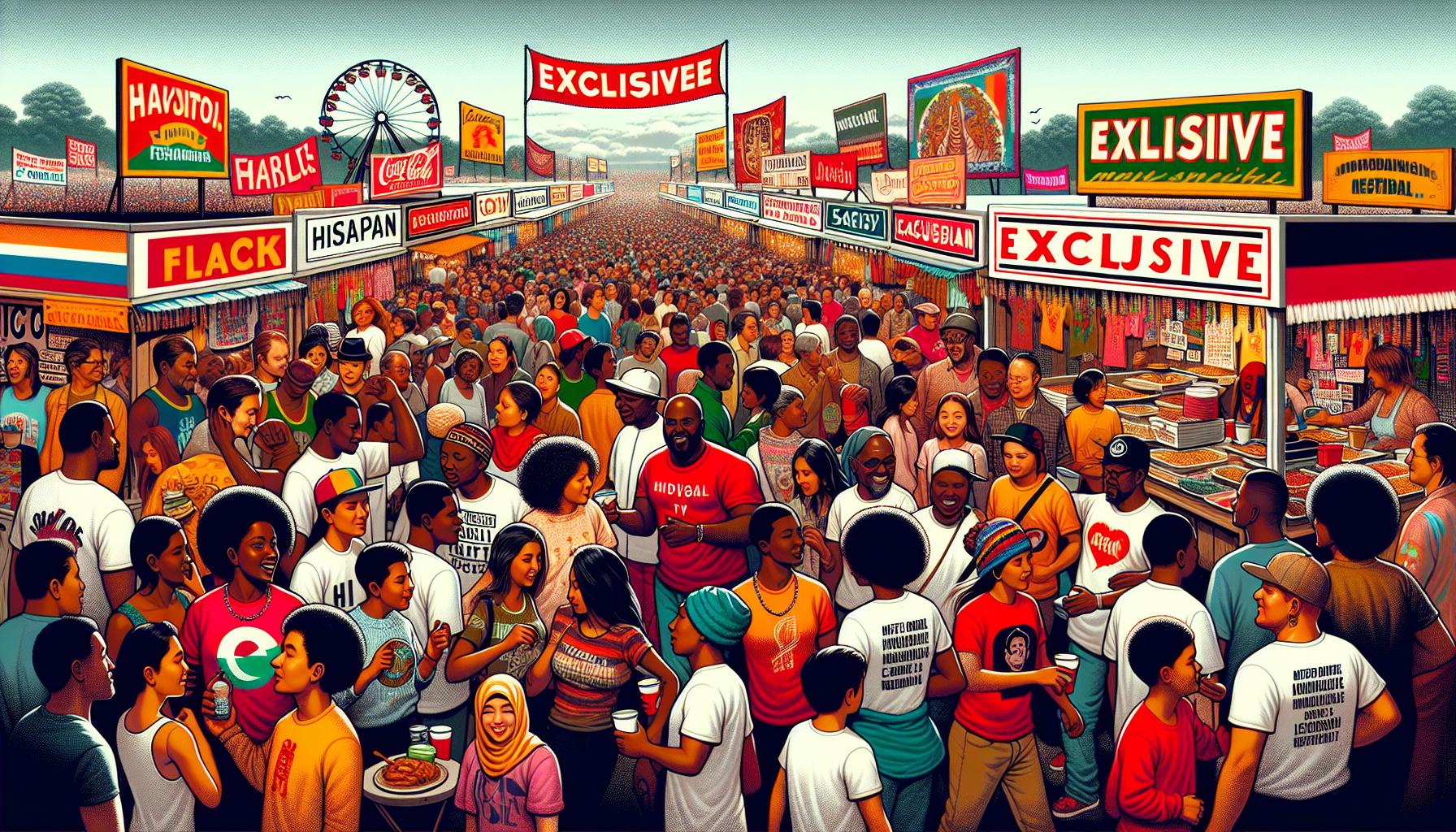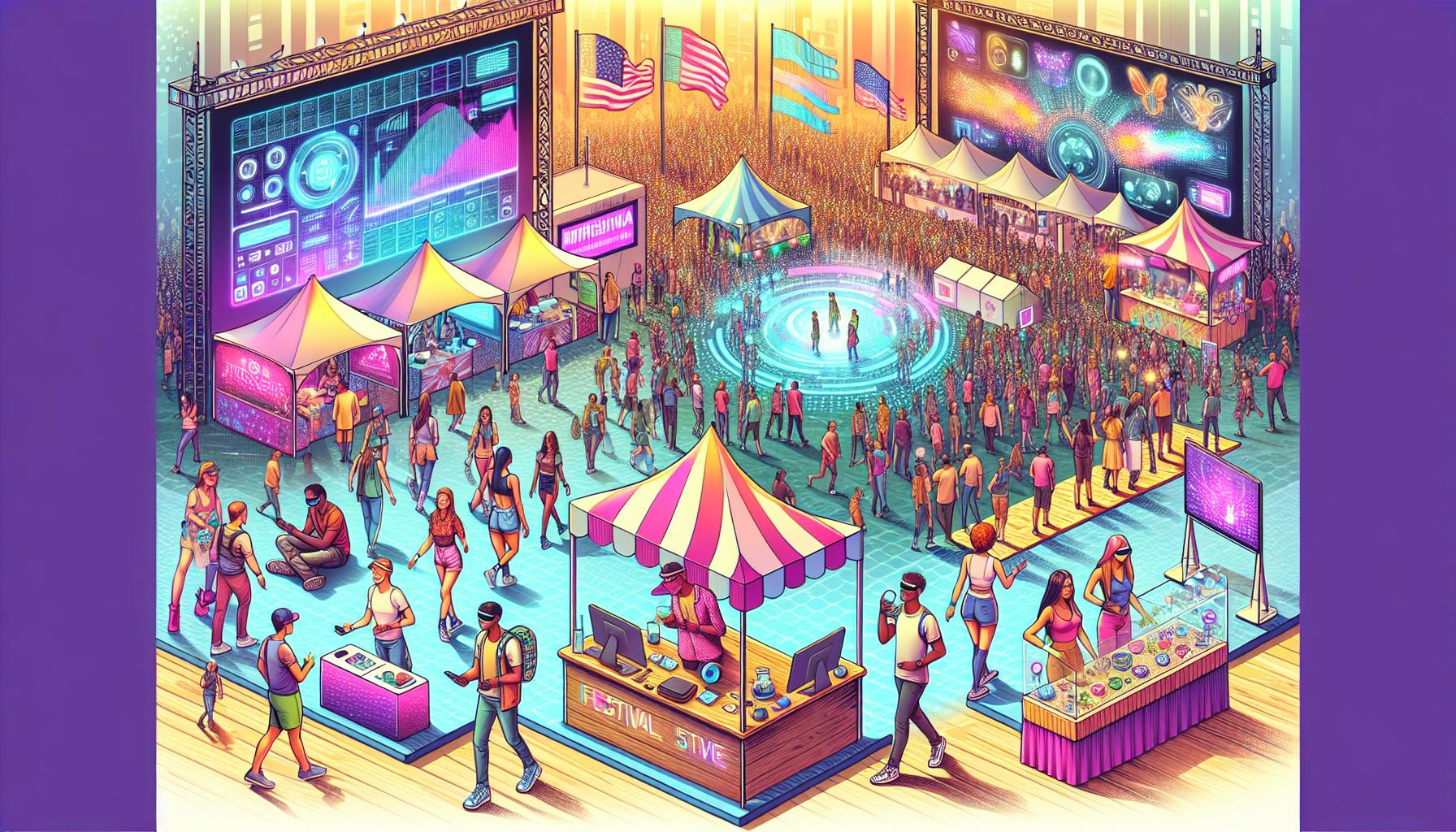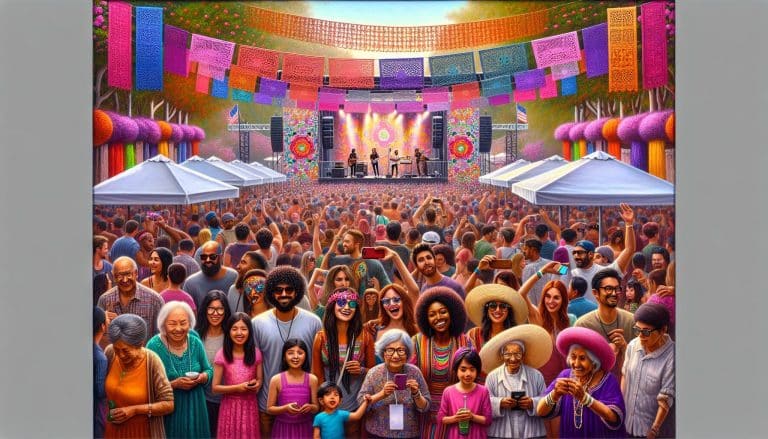Are you looking to boost your festival’s bottom line? Generating ancillary revenue can be a game-changer for your event’s financial success. While ticket sales are crucial, there’s a wealth of untapped potential in additional income streams that can significantly increase your profits.
From merchandise and food vendors to sponsorships and VIP experiences, the opportunities to maximize your festival’s revenue are endless. By diversifying your income sources, you’ll not only enhance your event’s financial stability but also create a more engaging and memorable experience for your attendees.
In this guide, we’ll explore innovative strategies to help you unlock the full revenue potential of your festival. You’ll discover practical tips and creative ideas to boost your bottom line while keeping your attendees happy and coming back for more.
Key Takeaways
- Ancillary revenue diversifies income streams beyond ticket sales, enhancing financial stability and reducing risk for festivals
- VIP packages, merchandise sales, and food/beverage options are key opportunities to boost ancillary revenue and improve attendee experiences
- Effective implementation strategies include audience research, unique offerings, local partnerships, and leveraging technology
- Marketing ancillary products through pre-event promotion, on-site upselling, and post-event follow-up maximizes revenue potential
- Measuring success through KPIs, data analysis, and customer feedback is crucial for optimizing ancillary revenue strategies
What Is Ancillary Revenue for Festivals?
Ancillary revenue for festivals encompasses all income sources beyond primary ticket sales. These additional revenue streams contribute to the overall financial success of your event. Ancillary revenue includes:
- Merchandise sales: T-shirts, posters, and branded items
- Food and beverage: Concession stands and food trucks
- Sponsorships: Brand partnerships and activations
- VIP experiences: Exclusive access and premium packages
- Parking fees: On-site and off-site parking options
- Camping: Overnight accommodation for multi-day events
- Vendor booths: Rental spaces for artisans and retailers
- Photo and video services: Professional event photography
- Wi-Fi access: Paid internet connectivity for attendees
Ancillary revenue diversifies your festival’s income, reducing reliance on ticket sales alone. This approach enhances financial stability and creates opportunities for attendees to engage with your event in multiple ways. By strategically implementing ancillary revenue streams, you maximize profits while enriching the overall festival experience.
Why Generate Ancillary Revenue for Your Festival?
Diversify Income Streams
Generating ancillary revenue diversifies your festival’s income streams. Relying solely on ticket sales exposes your event to financial risks. By incorporating multiple revenue sources such as merchandise, food and beverage sales, and sponsorships, you create a financial buffer against unexpected setbacks. This diversification strategy enhances your festival’s financial stability and resilience in the face of market fluctuations or unforeseen circumstances.
Enhance Customer Experience
Ancillary revenue streams often translate to enhanced customer experiences. VIP packages, premium food options, and exclusive merchandise provide attendees with opportunities to customize their festival experience. These additional offerings cater to diverse preferences and budgets, allowing festival-goers to create memorable moments beyond the musical performances. By offering a range of amenities and services, you increase attendee satisfaction and encourage repeat attendance in future years.
Competitive Advantage
Implementing ancillary revenue streams sets your festival apart from competitors. Unique offerings such as themed merchandise, interactive brand activations, or exclusive VIP areas create a distinct identity for your event. These differentiators attract sponsors, partners, and attendees who value innovative experiences. By continuously exploring new revenue opportunities, you position your festival as a trendsetter in the industry, fostering long-term growth and sustainability.
Types of Ancillary Revenue Opportunities
Festivals offer diverse ancillary revenue streams beyond ticket sales. Explore these opportunities to maximize your festival’s financial potential:
VIP Packages and Tiered Access
Create exclusive VIP packages to enhance attendee experiences and boost revenue. Offer tiered access options with premium perks:
- Elevated viewing areas: Provide prime spots for stage visibility
- Fast-track entry: Allow quick access to festival grounds and stages
- Backstage tours: Grant behind-the-scenes access to select areas
- Meet-and-greet sessions: Arrange interactions with performers or celebrities
- Luxury amenities: Include private lounges, air-conditioned tents, or VIP-only bars
Merchandise Sales
Develop a range of branded merchandise to generate additional income:
- Apparel: T-shirts, hoodies, and hats with festival logos or artwork
- Accessories: Bags, pins, patches, and phone cases
- Limited-edition items: Numbered posters or collectible memorabilia
- Artist collaborations: Unique merchandise featuring performer designs
- On-site customization: Personalized items created at the festival
Food and Beverage Options
Curate diverse food and beverage offerings to cater to attendee preferences:
- Local cuisine: Partner with regional restaurants or food trucks
- Specialty bars: Offer craft cocktails, artisanal wines, or microbrews
- VIP dining experiences: Create exclusive food areas with gourmet options
- Branded concessions: Develop festival-specific food or drink items
- Food festivals within the festival: Organize themed food events or competitions
Parking and Transportation Services
Monetize transportation and parking solutions for attendee convenience:
- Premium parking spots: Sell reserved spaces close to festival entrances
- Shuttle services: Offer transportation from nearby hotels or city centers
- Valet parking: Provide a luxury option for VIP ticket holders
- Bike or scooter rentals: Partner with local vendors for on-site rentals
- Rideshare lounges: Create designated areas for pickup and dropoff services
- Interactive installations: Charge for access to immersive art experiences
- Workshops or classes: Offer paid sessions on music, art, or wellness
- Gaming areas: Set up arcades or virtual reality experiences
- Photo opportunities: Create Instagram-worthy backdrops with professional photographers
- Spa services: Provide massages, beauty treatments, or relaxation zones
Strategies for Implementing Ancillary Revenue

Research Your Target Audience
Conduct thorough market research to understand your festival attendees’ preferences and spending habits. Analyze demographic data, survey responses, and social media engagement to identify potential revenue opportunities. Use this information to tailor your ancillary offerings to match audience interests and willingness to spend.
Develop Unique Offerings
Create exclusive experiences and products that align with your festival’s theme and brand. Design limited-edition merchandise collaborations with popular artists or local designers. Offer themed food and beverage packages that reflect your event’s atmosphere. Develop VIP experiences with behind-the-scenes access or meet-and-greet opportunities to increase the perceived value of premium offerings.
Partner with Local Businesses
Forge strategic partnerships with local businesses to expand your revenue streams. Collaborate with nearby hotels to create festival accommodation packages. Partner with restaurants to offer branded dining experiences or food delivery services. Work with transportation companies to provide convenient shuttle services or branded rideshare options. These partnerships can generate additional income through revenue-sharing agreements or sponsorship deals.
Leverage Technology and Data
Implement a robust event management platform to streamline operations and gather valuable attendee data. Use mobile apps to offer in-app purchases, upgrades, and personalized recommendations. Analyze real-time data to optimize pricing strategies and identify popular offerings. Utilize RFID technology for cashless payments to increase spending and reduce transaction times. Implement AI-powered chatbots to provide instant customer support and upsell ancillary products.
Marketing Your Ancillary Products and Services

Pre-Event Promotion
Create anticipation for your ancillary offerings through targeted pre-event marketing campaigns. Use social media platforms to showcase exclusive merchandise designs, VIP package perks, and unique food vendor partnerships. Send email newsletters highlighting special deals on early merchandise purchases or VIP upgrades. Collaborate with influencers in your festival’s niche to generate buzz around premium experiences and limited-edition products. Implement countdown campaigns that reveal new ancillary offerings each week leading up to the event, keeping potential attendees engaged and excited.
On-Site Upselling Techniques
Maximize on-site revenue by strategically placing ancillary product displays and service booths in high-traffic areas. Train staff in effective upselling techniques, equipping them with knowledge about premium upgrades and exclusive offers. Use digital signage and event apps to promote time-sensitive deals on merchandise or VIP experiences. Create FOMO (Fear of Missing Out) by displaying real-time stock levels of limited-edition items. Implement a loyalty program that rewards attendees with points for purchases, encouraging them to spend more on-site.
Post-Event Follow-Up
Extend the revenue generation beyond the festival dates through targeted post-event marketing. Send personalized emails featuring exclusive post-event merchandise or early-bird tickets for next year’s festival. Share professional photos and videos from VIP experiences on social media, enticing followers to upgrade their tickets for future events. Offer limited-time discounts on remaining merchandise stock to clear inventory while generating additional revenue. Gather feedback on ancillary offerings through surveys, using the data to refine and improve your products and services for upcoming festivals.
Measuring and Analyzing Ancillary Revenue Success
Set Clear Key Performance Indicators (KPIs)
Establish specific KPIs to measure ancillary revenue success. Include metrics such as:
- Total ancillary revenue per attendee
- Percentage of overall revenue from ancillary sources
- Conversion rates for upsells and add-ons
- Average transaction value for merchandise sales
- Utilization rates of VIP packages and premium experiences
Implement Data Collection Systems
Deploy robust data collection systems to track ancillary revenue streams:
- Use point-of-sale (POS) systems with detailed reporting capabilities
- Implement RFID wristbands for cashless transactions and data tracking
- Integrate online ticketing platforms with merchandise pre-order options
- Utilize mobile apps to collect real-time purchase data and user preferences
Analyze Revenue Breakdown
Conduct a comprehensive analysis of ancillary revenue sources:
- Create a breakdown of revenue by category (e.g., merchandise, food and beverage, VIP packages)
- Identify top-performing products or experiences
- Calculate profit margins for each revenue stream
- Compare performance against industry benchmarks and previous events
Gather Customer Feedback
Collect attendee feedback to gain insights into ancillary offerings:
- Conduct post-event surveys focusing on ancillary products and services
- Use on-site feedback kiosks for real-time input
- Monitor social media mentions and sentiment related to ancillary offerings
- Analyze customer support inquiries for common issues or suggestions
Perform ROI Analysis
Calculate the return on investment for each ancillary revenue initiative:
- Compare revenue generated against implementation costs
- Assess the impact on overall attendee satisfaction and event reputation
- Evaluate the long-term potential for each revenue stream
- Identify areas for cost optimization or revenue expansion
Use Data Visualization Tools
Employ data visualization tools to present findings effectively:
- Create dashboards with key metrics for easy monitoring
- Generate heat maps to identify high-traffic areas for ancillary sales
- Develop trend charts to track performance over multiple events
- Produce comparative graphs to assess different revenue streams
Conduct Predictive Analysis
Leverage historical data for future event planning:
- Use machine learning algorithms to forecast demand for ancillary products
- Identify factors influencing ancillary revenue performance
- Predict potential revenue impact of new offerings or pricing strategies
- Optimize inventory and staffing based on projected demand
Benchmark Against Industry Standards
Compare your festival’s ancillary revenue performance to industry benchmarks:
- Research industry reports and case studies for relevant data
- Attend industry conferences to gather insights on best practices
- Network with other festival organizers to exchange non-confidential information
- Engage with industry associations for access to benchmarking resources
By implementing these strategies, you gain a comprehensive understanding of your festival’s ancillary revenue performance. This data-driven approach enables informed decision-making, continuous improvement, and maximized profitability for future events.
Common Challenges and How to Overcome Them

Limited Space and Resources
Optimize space utilization by creating multi-purpose areas. Transform unused corners into pop-up shops or mini-stages for acoustic performances. Implement a rotating schedule for vendors to maximize variety without increasing physical footprint.
Weather-Related Issues
Prepare contingency plans for various weather scenarios. Invest in sturdy tents and weatherproof equipment. Offer weather-appropriate merchandise like ponchos or sunscreen to turn potential problems into revenue opportunities.
Balancing Quality and Quantity
Focus on curated experiences rather than overwhelming attendees with options. Select vendors and activities that align with your festival’s theme and audience preferences. Implement a quality control process to ensure all offerings meet high standards.
Managing Cash Flow
Implement cashless payment systems to streamline transactions and reduce theft risk. Offer pre-event sales of food and beverage packages to improve cash flow forecasting. Negotiate favorable payment terms with suppliers to balance income and expenses.
Staffing and Training
Create comprehensive training programs for temporary staff. Develop clear guidelines and scripts for upselling ancillary products. Implement a mentorship system pairing experienced staff with newcomers to ensure consistent service quality.
Competition from External Vendors
Establish exclusivity agreements with on-site vendors to prevent competition from unauthorized sellers. Create a perimeter control plan to monitor and manage external vendor activity. Offer competitive pricing and unique products to discourage attendees from seeking alternatives outside the festival grounds.
Technology Integration
Invest in robust event management software to streamline operations and data collection. Ensure reliable internet connectivity throughout the venue for seamless digital transactions. Implement user-friendly mobile apps for easy access to festival information and purchasing options.
Inventory Management
Use real-time inventory tracking systems to prevent stockouts and overstocking. Implement just-in-time delivery for perishable items to minimize waste. Create a flexible supply chain that can quickly respond to unexpected demand fluctuations.
Legal and Regulatory Compliance
Stay informed about local regulations affecting food service, alcohol sales, and merchandise licensing. Obtain necessary permits well in advance of the event. Implement strict age verification processes for age-restricted products and activities.
Maintaining Brand Consistency
Develop clear brand guidelines for all ancillary products and services. Ensure all vendors and partners adhere to these standards. Create a cohesive visual identity across all touchpoints to reinforce the festival’s brand and enhance perceived value.
Future Trends in Festival Ancillary Revenue
Virtual and Augmented Reality Experiences
Virtual and augmented reality experiences transform festival ancillary revenue. Offer immersive VR concerts or AR-enhanced festival grounds to create unique, monetizable experiences. Implement virtual meet-and-greets with artists or interactive AR scavenger hunts throughout the venue to boost engagement and revenue.
Blockchain and NFTs
Blockchain technology and NFTs revolutionize festival merchandising and ticketing. Create limited-edition digital collectibles or NFT-based VIP passes to generate additional income streams. Utilize blockchain for secure, transparent ticket sales and resales, capturing a percentage of secondary market transactions.
Personalized Experiences and Data Monetization
Leverage data analytics to offer personalized experiences and monetize attendee data. Develop AI-powered recommendation systems for food, merchandise, and activities based on individual preferences. Partner with brands to provide targeted marketing opportunities, creating a new revenue source while enhancing the festival experience.
Sustainable and Eco-Friendly Initiatives
Capitalize on the growing demand for sustainability in events. Introduce eco-friendly merchandise lines or carbon offset programs as additional revenue streams. Offer premium sustainable accommodation options or partner with green transportation providers to generate income while promoting environmental responsibility.
Health and Wellness Integration
Incorporate health and wellness elements into your festival offerings. Create dedicated wellness zones with yoga classes, meditation sessions, or nutrition workshops to attract health-conscious attendees and generate additional revenue. Partner with health-focused brands for sponsorships and product sales opportunities.
Micro-Events and Exclusive Experiences
Develop micro-events and exclusive experiences within the main festival. Organize intimate songwriter sessions, culinary masterclasses with celebrity chefs, or backstage tours as premium add-ons. These exclusive offerings create high-value ancillary revenue streams and enhance the overall festival experience.
Smart Wearables and Contactless Technology
Implement smart wearables and contactless technology to streamline transactions and gather data. Introduce RFID-enabled wristbands or festival-specific mobile apps for cashless payments, access control, and personalized notifications. Monetize these platforms through in-app purchases, targeted promotions, and data insights for sponsors.
Gamification and Loyalty Programs
Integrate gamification elements and loyalty programs to drive engagement and spending. Create a points-based system where attendees earn rewards for purchases, social media interactions, or participating in festival activities. Offer exclusive perks or discounts to incentivize higher spending and repeat attendance.
Remote Attendance Options
Expand your audience reach with remote attendance options. Offer live-streaming packages or virtual festival experiences for those unable to attend in person. Create hybrid events that combine on-site and online elements, opening up new revenue streams from a global audience.
Collaborative Brand Experiences
Partner with brands to create immersive, collaborative experiences. Develop brand-sponsored interactive installations or pop-up stores that align with your festival’s theme. These partnerships generate revenue through sponsorships and create unique, shareable moments that enhance the overall festival experience.
Conclusion
Generating ancillary revenue from your festival opens up a world of possibilities. By implementing these strategies you’ll not only boost your bottom line but also create unforgettable experiences for attendees. From VIP packages to cutting-edge tech integrations the future of festival revenue looks bright. Embrace these innovative approaches to stay ahead of the curve and meet evolving attendee expectations. Remember that success lies in offering unique value beyond the music lineup. With creativity and strategic planning you can transform your festival into a multifaceted revenue-generating powerhouse while delivering exceptional experiences that keep fans coming back year after year.
Frequently Asked Questions
What are the main ancillary revenue opportunities for festivals?
The main ancillary revenue opportunities for festivals include VIP packages, merchandise sales, food and beverage concessions, sponsorships, and exclusive experiences. These options allow festivals to diversify their income streams beyond ticket sales, enhancing profitability and providing attendees with additional ways to engage with the event.
How can virtual and augmented reality enhance festival experiences?
Virtual and augmented reality can create immersive experiences at festivals, such as virtual meet-and-greets with artists, AR-enhanced stage performances, or interactive virtual environments. These technologies can offer unique, premium experiences that attendees are willing to pay extra for, while also providing opportunities for remote participation and expanding the festival’s reach.
What role can blockchain and NFTs play in festival revenue generation?
Blockchain and NFTs can create new revenue streams through digital collectibles, exclusive access tokens, and secure ticketing systems. Festivals can offer limited edition NFTs tied to special experiences or memorabilia, use blockchain for transparent ticket sales and resales, and create digital marketplaces for fans to trade and collect festival-related assets.
How can data analytics contribute to personalized festival experiences?
Data analytics can help festivals tailor experiences to individual preferences by analyzing attendee behavior, purchase history, and interests. This information can be used to create personalized recommendations, targeted marketing, and customized packages. By offering more relevant experiences, festivals can increase customer satisfaction and boost ancillary revenue opportunities.
What sustainable initiatives can festivals implement to generate revenue?
Festivals can implement eco-friendly merchandise, reusable cup programs with deposits, carbon offset purchases, and sustainable food options. These initiatives not only appeal to environmentally conscious attendees but can also create new revenue streams. Partnerships with sustainable brands for exclusive products or experiences can further enhance these efforts.
How can health and wellness be integrated into festival revenue strategies?
Festivals can offer premium wellness experiences such as yoga classes, meditation sessions, or spa treatments. Healthy food options, fitness challenges, and partnerships with wellness brands can also generate additional revenue. These offerings cater to health-conscious attendees and create opportunities for sponsorships and product sales.
What are micro-events and how can they boost festival revenue?
Micro-events are small, exclusive gatherings within the larger festival, such as intimate performances, workshops, or VIP dinners. These events can be sold as premium add-ons to standard tickets, providing a more personalized experience for attendees willing to pay extra. Micro-events create additional revenue streams and enhance the overall festival experience.
How can smart wearables be used to increase festival revenue?
Smart wearables like RFID bracelets can facilitate cashless payments, access control, and personalized experiences. These devices can streamline purchases, encourage impulse buying, and provide valuable data on attendee behavior. Festivals can also offer branded wearables as merchandise or use them for interactive experiences and contests.
What is gamification and how can it enhance festival revenue?
Gamification involves adding game-like elements to the festival experience, such as scavenger hunts, challenges, or reward systems. This can increase engagement, encourage exploration of different areas or vendors, and create opportunities for sponsored activities. Gamification can lead to increased participation in revenue-generating activities and enhance overall attendee satisfaction.
How can remote attendance options contribute to festival revenue?
Remote attendance options, such as live streaming or virtual reality experiences, can expand a festival’s audience beyond physical attendees. These options can be sold as separate tickets or as add-ons to in-person tickets. Remote attendance also opens up opportunities for global sponsorships and virtual merchandise sales, increasing overall revenue potential.
You May Also Like:
10 Smart Ways to Cut Music Festival Costs Without Sacrificing Quality
Music Festival Marketing: The Ultimate Guide to Boosting Ticket Sales and Buzz
How to Create a Festival Production Budget: A Step-by-Step Guide



